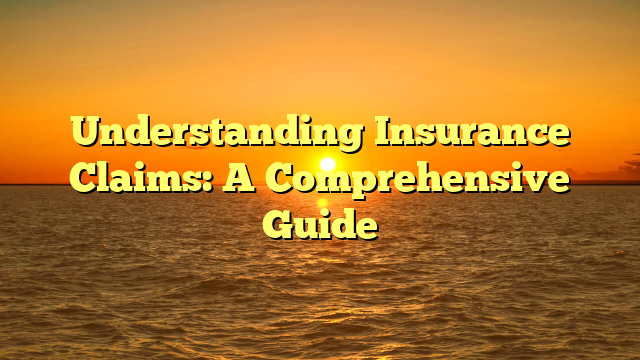Home insurance is a crucial aspect of protecting your most valuable asset and ensuring financial security for you and your family. Understanding the various aspects of home insurance coverage is essential for making informed decisions and securing the right policy.
In this guide, we will delve into the key components of home insurance coverage, explain different types of policies, discuss factors that impact premiums, provide useful tips for finding the best coverage, and answer frequently asked questions.
Understanding Home Insurance Coverage
Home insurance, also known as homeowner’s insurance, is a type of property insurance that provides financial protection against damages to your home, its contents, and liability for accidents that occur on your property. It covers a wide range of perils, such as fire, theft, vandalism, and certain natural disasters.
Why Do You Need Home Insurance?
Home insurance is essential because it safeguards your investment in your home and protects your personal belongings. Additionally, most mortgage lenders require homeowners to carry insurance to protect their financial interest in the property.
What Does Home Insurance Cover?
Home insurance typically covers four main areas: dwelling coverage, other structures coverage, personal property coverage, and liability coverage. It may also provide additional living expenses coverage if your home becomes uninhabitable due to a covered loss.
Types of Home Insurance Policies
There are various types of home insurance policies, including HO-1, HO-2, HO-3, HO-4, HO-5, HO-6, and HO-8. The most common policy is the HO-3, which provides broad coverage for the dwelling, other structures, personal property, and liability.
Key Components of Home Insurance Coverage
a. Dwelling Coverage
Dwelling coverage protects the structure of your home, including the walls, roof, floors, and built-in appliances. It covers damages caused by covered perils, such as fire, windstorm, or vandalism.
b. Other Structures Coverage
Other structure coverage protects structures on your property that are not attached to your main dwelling, such as detached garages, sheds, or fences.
c. Personal Property Coverage
Personal property coverage insures your belongings, such as furniture, clothing, electronics, and appliances, against damage or theft. It may also cover your belongings when you’re traveling.
d. Liability Coverage
Liability coverage protects you financially if someone is injured on your property and you are found legally responsible. It covers medical expenses, legal fees, and damages awarded in a lawsuit.
e. Additional Living Expenses Coverage
Additional living expenses coverage reimburses you for expenses incurred if your home becomes temporarily uninhabitable due to a covered loss. It covers costs like hotel bills, meals, and other necessary expenses.
Factors Affecting Home Insurance Premiums
a. Location and Risk Factors
The location of your home plays a significant role in determining your insurance premiums. Factors such as proximity to coastlines, flood zones, crime rates, and fire protection services can influence the risk level associated with your property.
b. Replacement Cost of Your Home
Insurance companies consider the cost to rebuild your home in the event of a total loss when calculating premiums. Factors such as the size, materials used, and special features of your home impact the replacement cost.
c. Deductibles and Coverage Limits
Choosing a higher deductible can lower your premiums, but you’ll need to pay more out of pocket in the event of a claim. Coverage limits should be set at a level that adequately protects your home and belongings.
d. Home Security and Safety Features
Home security and safety features, such as burglar alarms, smoke detectors, fire sprinklers, and deadbolt locks, can reduce the risk of damage or loss. Insurance companies often offer discounts for homes equipped with these protective measures.
e. Claims History and Credit Score
A history of previous claims or poor credit can impact your home insurance premiums. Insurance companies may view policyholders with a higher number of claims or lower credit scores as higher-risk individuals.
Tips for Finding the Best Home Insurance Coverage
a. Assess Your Insurance Needs
Evaluate your home’s value, contents, and potential risks to determine the coverage limits and types of coverage you require. Consider factors such as the age of your home, its location, and the value of your belongings.
b. Shop Around and Compare Quotes
Obtain quotes from multiple insurance providers to compare coverage options and premiums. Each insurer may have different rates and discounts, so it’s essential to explore your options and find the best value for your needs.
c. Understand Policy Exclusions and Limitations
Review policy exclusions, limitations, and deductibles carefully. Make sure you understand what perils are covered and any specific conditions or restrictions that may apply.
d. Consider Bundling Policies
Many insurance companies offer discounts when you bundle multiple policies, such as home and auto insurance, with the same provider. Bundling can save you money and simplify your insurance management.
e. Review and Update Your Policy Regularly
Regularly review your policy to ensure it reflects any changes in your home, belongings, or coverage needs. Inform your insurer about any renovations, additions, or upgrades to your property, as they may affect your coverage.
Frequently Asked Questions (FAQs)
a. What is the Difference Between Actual Cash Value and Replacement Cost Coverage?
Actual cash value coverage pays for the replacement cost of damaged property minus depreciation, while replacement cost coverage reimburses you for the full cost of replacing damaged items without factoring in depreciation.
b. Does Home Insurance Cover Natural Disasters?
Home insurance policies typically cover some natural disasters, such as fire, windstorms, and hail. However, coverage for specific events like earthquakes or floods may require separate policies or endorsements.
c. Can I Switch Home Insurance Providers Mid-Policy?
Yes, you can switch home insurance providers mid-policy. However, it’s essential to consider any potential penalties or fees for canceling your current policy and ensure there is no lapse in coverage during the transition.
d. How Can I Lower My Home Insurance Premiums?
To lower your home insurance premiums, you can consider increasing your deductible, improving home security and safety features, maintaining a good credit score, and bundling policies with the same insurer.
e. What Should I Do in Case of a Home Insurance Claim?
In case of a home insurance claim, promptly notify your insurance company and provide all necessary documentation and evidence of the damages. Take steps to prevent further damage, and cooperate with the insurer’s claims process.
Conclusion
Home insurance coverage is a vital aspect of protecting your home, belongings, and financial well-being. By understanding the key components of home insurance, considering factors that affect premiums, and following the tips provided in this guide, you can make informed decisions and find the best coverage for your needs.
Remember to regularly review and update your policy to ensure it remains relevant and provides adequate protection.


